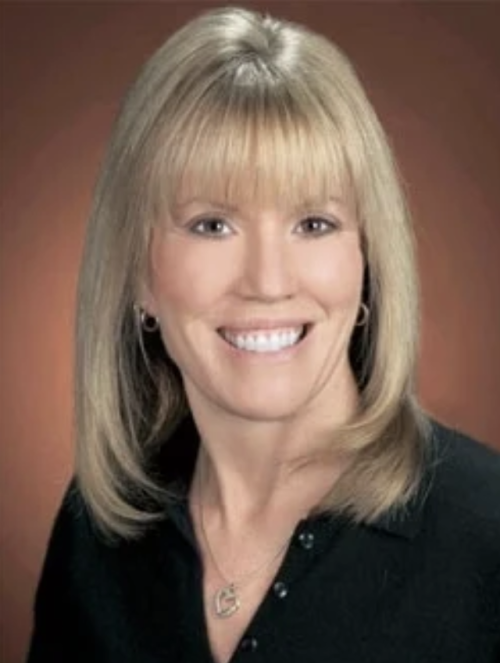- About
- Donate
- Listserv
- Upcoming Events
-
Resources
- General Resources
- Resources for Patients
- Resources for Clinicians
The Mark L Graber Diagnostic Quality Award
Image
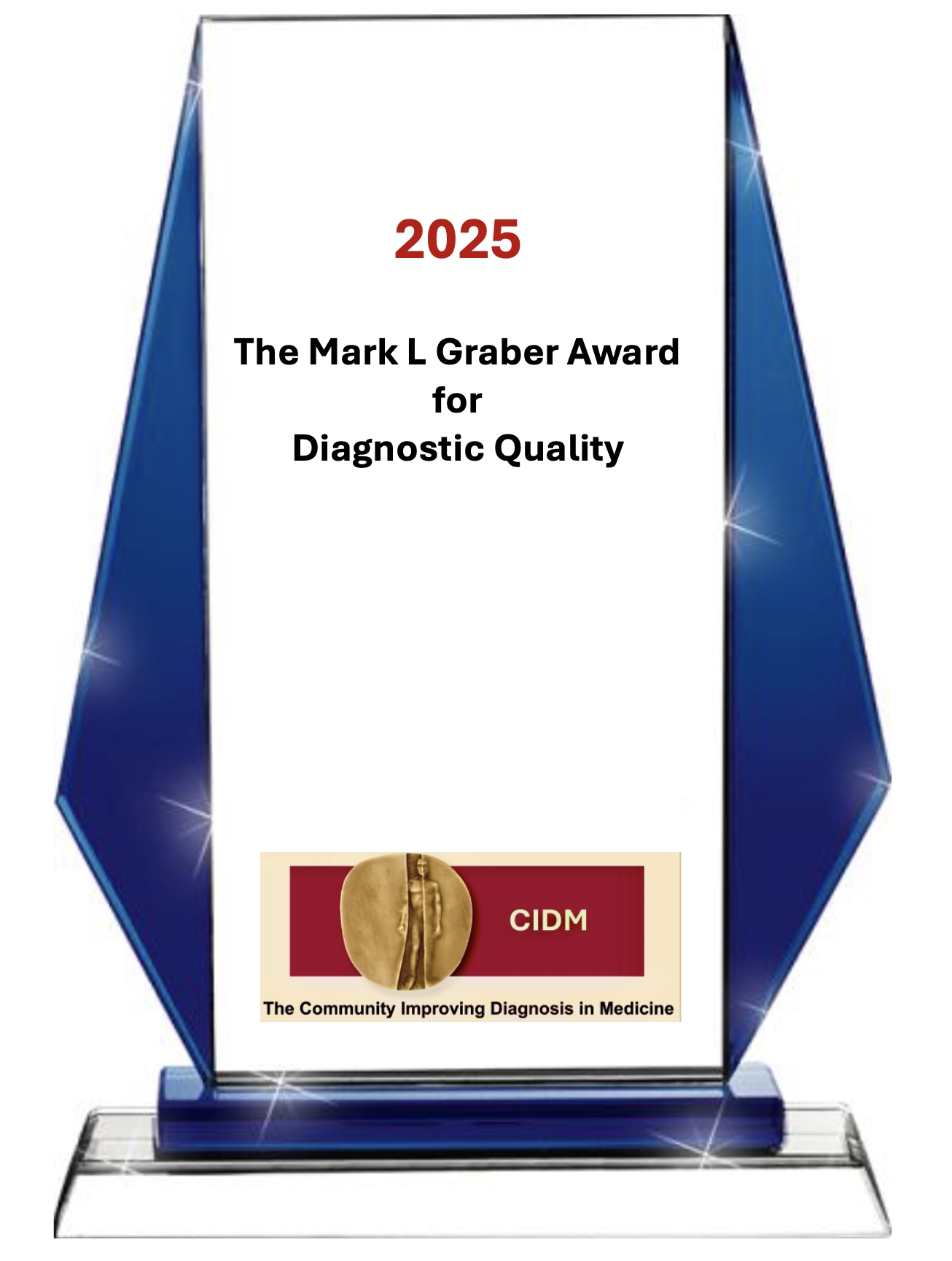
In collaboration with CoDEx, CIDM presents the annual Mark L. Graber Diagnostic Quality Award to a person, group, or organization that has made important contributions to the reduction of diagnostic error. Awards are announced at the annual DEX (Diagnostic Excellence) meeting.
The award recognizes either a total body of work (“lifetime achievement”) or a significant contribution in the field. The nominee can have had influence in the fields of education, research, practice improvement, patient engagement, and/or policy.
The award was named in honor of Mark L. Graber, MD, FACP, the founder of the Diagnostic Error in Medicine conference series, SIDM, and CIDM. Mark served as the SIDM President from 2011 through 2018, and his contributions constitute the foundations of our field and the focus on diagnostic quality and safety.
Past Recipients
Image
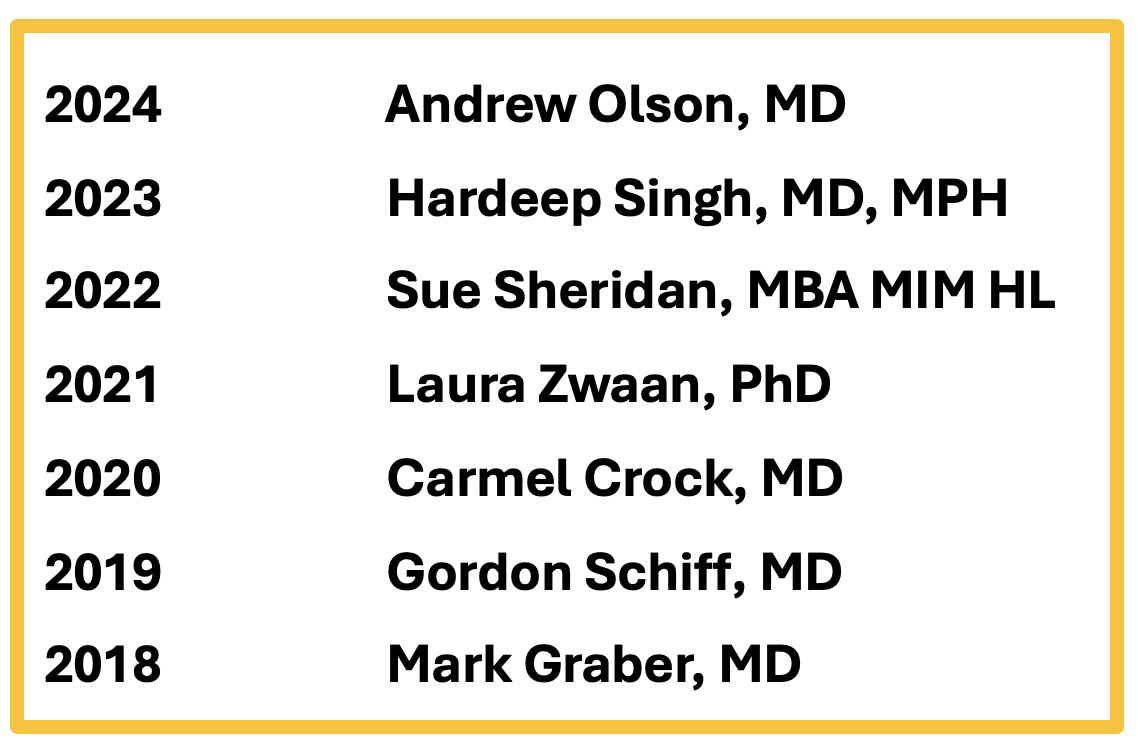
Image

2024 Andrew Olson, MD FACP FAAP
Dr Andrew Olson is Professor of Medicine at the University of Minnesota School of Medicine. He has been a highly visible and effective champion of diagnostic safety and SIDM’s work for over a decade. He has served on SIDM's Board of Directors, and twice chaired the annual Diagnostic Error conference. Andrew has been especially influential in both the Pediatrics community and the community of medical educators. His research and scholarly papers on teamwork, feedback, and diagnostic competency represent important advances in our field, and are highly cited.
Dr Olson has influenced a generation of trainees and continues to inspire his many colleagues and friends in the US and internationally to continue the work of improving diagnostic safety and quality, and he serves as probably our leading role model for how to be effective in this mission.
Image
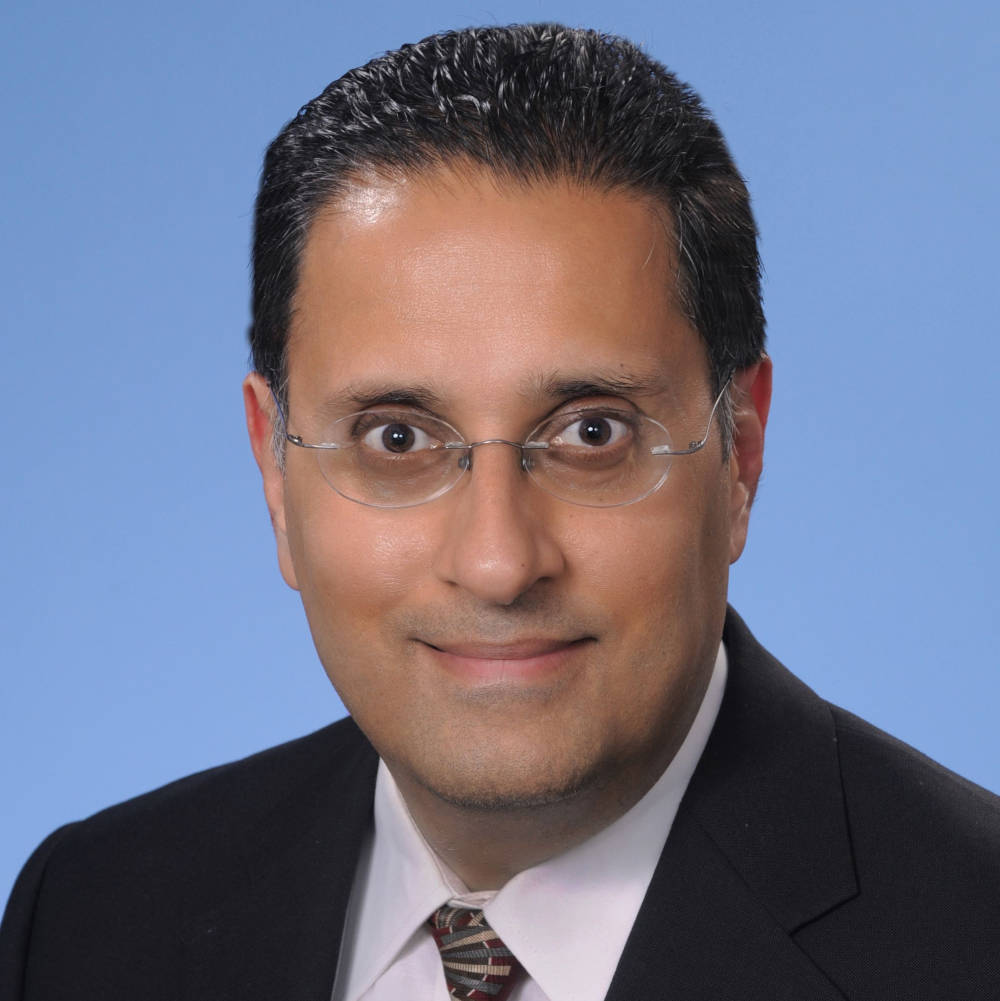
2023 Hardeep Singh, MD MPH
Dr Singh is Professor of Medicine at Baylor College of Medicine (BCM) and the Michael E. DeBakey VA Medical Center (MEDVAMC). He is the Chief of the Health Policy, Quality and Informatics Program at the Houston VA Center for Innovation in Quality, Effectiveness, and Safety (IQuESt) and the Director of the “Diagnosis Improvement Safety Center” (DISCovery), funded by the VA National Center for Patient Safety. He is recipient of the John M Eisenberg Award from the NQF and Joint Commision, and the prestigious Presidential Early Career Award for Scientists and Engineers (PECASE).
Dr Singh is the nation’s most productive and influential researcher in the area of diagnostic quality and safety (over 200 publications and over 20,000 citations), focusing extensively on how the EHR and health IT can identify, help measure, and help reduce diagnostic errors. His new definition of diagnostic error (missed opportunities) has been foundational in research work internationally, and provides an operational definition that can be used to monitor diagnostic quality in real time. He has championed a socio-technical perspective to understand and improve diagnosis and this framework has proven to be instrumental in understanding and addressing the many contextual factors that impact diagnosis. His tools for diagnostic improvement work, SaferDx, MeasureDx and CalibrateDx have become national and international standards.
2022 Sue Sheridan, MBA MIM DHL
Susan E. Sheridan, MIM, MBA, DHL, is a Founding Member of Patients for Patient Safety (PFPS) US and served as Director of Patient Engagement Emeritus at the Society to Improve Diagnosis in Medicine (SIDM). In 2022, Sheridan was appointed to the Patient Safety Working Group of the President’s Council of Advisors on Science and Technology (PCAST). Prior to her current roles, she served as the Patient and Family Engagement Adviser in the Center for Clinical Standards and Quality at the Centers of Medicare and Medicaid Services (CMS), the Director of Patient Engagement of the Patient-Centered Outcomes Research Institute (PCORI) and led the World Health Organization’s (WHO) Patients for Patient Safety initiative. In April 2009, Sheridan was named to Modern Healthcare‘s list of Top 25 Women in Healthcare as well as Modern Healthcare’s 100 Most Powerful People in Healthcare.
Inspired by diagnostic errors involving both her late husband and her son, Cal, Sue has been the nation’s most effective advocate for advancing the roles patients can play to improve diagnostic safety in their own lives and in healthcare generally.
Image

2021 Laura Zwaan, PhD
Laura Zwaan, PhD is a cognitive psychologist, an epidemiologist, and Associate Professor at the Institute of Medical Education Research Rotterdam (iMERR) of the Erasmus MC in Rotterdam. Dr Zwaan has authored a growing collection of original research investigations that have have clarified how diagnostic errors arise, and early studies of error prevention. Her commitment and dedication to creating awareness in reducing diagnostic error have been instrumental in her initiating the European Diagnostic Error in Medicine conference. She chaired the first European conference of Rotterdam and co-chaired the subsequent conference in Bern, Switzerland.
"The Board of Directors is pleased to award Laura Zwaan … for her numerous scientific contributions in the field of diagnostic error and was one of the very first investigators to apply scientific rigor to the study of the diagnostic process," said Edward Hoffer, SIDM board member. "Laura has chaired SIDM's Research Committee, the Research Summits at Diagnostic Error in Medicine Conference and she has mentored new investigators in the field."
Image
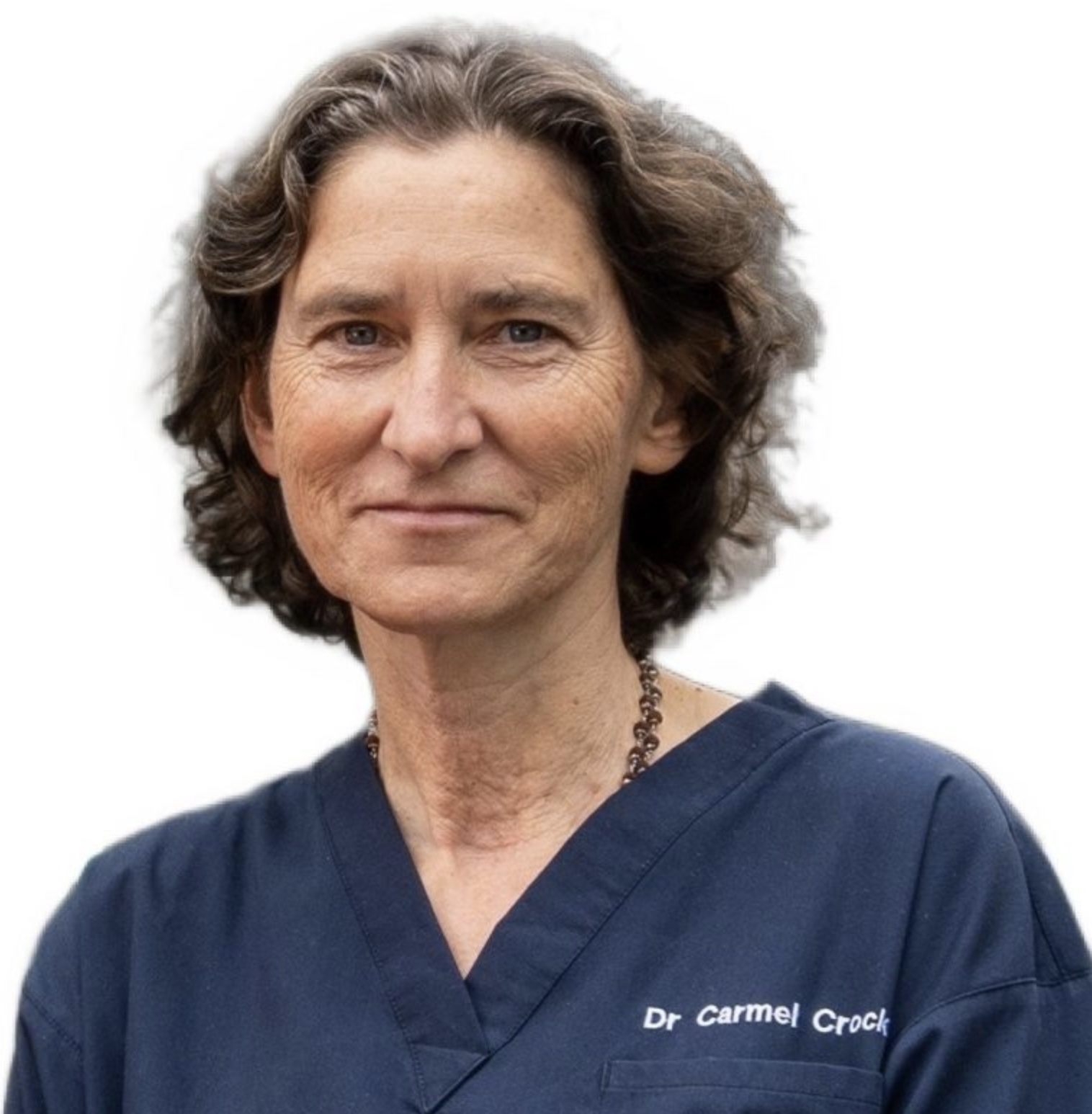
2000 Carmel Crock, MD
Dr. Crock is an emergency physician and director of the Emergency Department at the Royal Victorian Eye and Ear Hospital in Melbourne, Australia; Associate Professor at the University of Melbourne; and Chair of the Australasian College for Emergency Medicine Quality and Patient Safety committee. Her education and research interests include preventing diagnostic error, improving healthcare culture and communication, and exploring the relationship between physician wellbeing and patient safety.
“Carmel has almost single-handedly established the diagnostic quality and safety field in Australia and New Zealand,” said David Newman-Toker, MD, PhD, President of SIDM. Her analysis of Australian cases found an estimated 140,000 cases of diagnostic error occur each year, with 21,000 cases of serious harm and 2,000–4,000 deaths. "She brings passion, real-world clinical experience, and humility to her efforts to reduce harm from diagnostic error and in doing so is transforming care delivery and improving the health and safety of Australians and New Zealanders. She is a tremendous leader and role model."
Dr Crock established SIDM's first international affiliate and she chaired the Australasian Diagnostic Error in Medicine Conference in 2017 and 2019.
2019 Gordon Schiff, MD
Dr. Schiff is the Associate Director of the Center for Patient Safety Research and Practice, at Brigham and Women's Hospital, Associate Professor of Medicine at Harvard Medical School, and Quality and Safety Director at the HMS Center for Primary Care. Dr. Schiff has made seminal contributions in research, practice improvement, education, and patient engagement to reduce diagnostic error. His “DEER” Taxonomy in 2005 revolutionized the way we understand and categorize the causes of diagnostic error, highlighting systems-related causes of errors and the idea that improving information flows, systems and processes could improve cognition and reduce errors. Dr Schiff has been a thought leader in the field, a mentor for scores of junior collaborators, and an effective advocate for advancing safety on the front lines.
Image

2018 Mark L Graber, MD FACP
Mark L. Graber, MD, FACP received the first Mark L. Graber Diagnostic Quality Award at the 2018 Diagnostic Error in Medicine Conference in recognition of his many achievements and his impact on the field of diagnostic quality and safety. Mark has committed his professional life to improving diagnosis worldwide. He is a pioneer who has had a groundbreaking impact on patient safety, recognizing the significance of diagnostic error, the most harmful and most overlooked threat to patient safety, and is credited with putting diagnostic error on the patient safety map.

